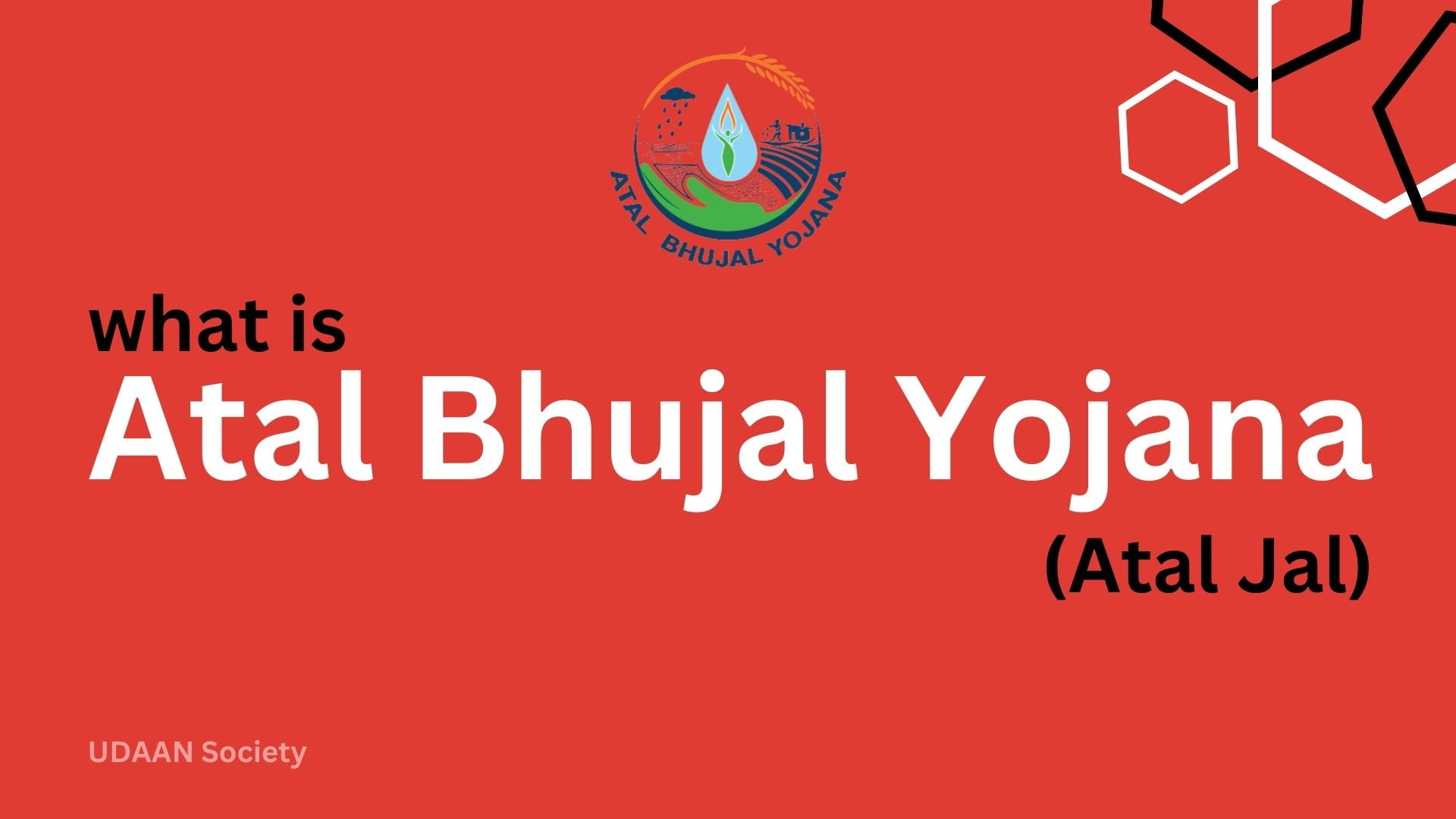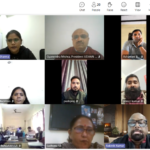Introduction
The Atal Bhujal Yojana, also known as Atal Jal, aims to manage groundwater sustainably by bringing together many existing initiatives and actively involving stakeholders and local people. This will guarantee that the money given by the federal and state governments to the Scheme region is used wisely to maintain the long-term sustainability of groundwater supplies. The main goal of the pilot programme is to fortify the institutional foundation for groundwater management that involves public participation.
After receiving funding permission from the World Bank in 2018, the Indian government launched the Atal Bhujal Yojana (ABY) in December 2019 in an effort to recognize and address the rapidly expanding issue of groundwater depletion. It was introduced as part of the government’s Jal Jeevan Mission.

Major Facts about Atal Bhujal Yojana (Atal Jal)
| The Date of Launch of Atal Bhujal Yojana | December 25, 2019, the unique day marking the 95th anniversary of the former prime minister Atal Bihari Vajpayee’s birth. |
| Components of the scheme, Atal Bhujal Yojana | There are two components: The incentive (outlay of Rs. 1600 crore)Institutional strengthening and capacity building (outlay of Rs. 1400 crore). |
| An outlay of the Atal Bhujal Yojana | INR 6000 Crore |
| Duration of the Atal Bhujal Yojana’s Implementation | 2020-2021 to 2024-2025 |
| The World Bank’s Support for the Atal Bhujal Yojana | $450 million |
What is Atal Bhujal Yojana?
The program’s goal was to emphasise groundwater resource recharging and enhance groundwater resource utilisation while including local community members.
- The Ministry of Water Resources, River Development, and Ganga Rejuvenation—now called as the Jal Shakti Ministry—will oversee and carry out the scheme.
- The World Bank will provide a loan to cover the remaining half of the scheme’s costs, with the government covering the other half.
- The government intends to provide 50% of the funds to states and gramme panchayats as rewards for meeting groundwater management goals in order to stimulate community involvement.
- Across 8353 water-stressed Gram Panchayats across Gujarat, Karnataka, Madhya Pradesh, Maharashtra, Rajasthan, Uttar Pradesh, and Haryana, the project is being implemented.
There are two components to the scheme:
- Component for Institutional Strengthening and Capacity Building (Rs. 1,400 Cr)
- The incentive component of Rs. 4,600 crore is intended to motivate the States.
The government has accelerated the Atal Bhujal Yojana‘s implementation in response to data from the Central Ground Water Board report showing that groundwater is being depleted in 30% of the evaluated blocks from the nation’s groundwater assessment at an alarming rate.

Goals of the Atal Bhujal Yojana
- Through community involvement, it seeks to manage groundwater in the nation’s priority areas.
- In India, there are two main kinds of groundwater systems: hard rock aquifers and alluvial ones. These are protected under the scheme.
- Gujarat, Haryana, Karnataka, Madhya Pradesh, Maharashtra, Rajasthan, and Uttar Pradesh are the priority areas served.
- In terms of groundwater, these States account for almost 25% of all overexploited, critical, and semi-critical blocks in India.
- Through capacity building and awareness campaigns, it also seeks to influence community behavior in order to promote sustainable groundwater management in the Member States.
Funding of the scheme
- The World Bank will loan INR 3,000 crore towards the Atal Bhujal Yojana (Atal Jal), a Central Sector Scheme, while the Government of India (GoI) would contribute an additional INR 3,000 crore.
- The scheme’s funding will be given to the states as grants-in-aid.
- The funding from the World Bank will be carried out using a brand-new lending tool called Programme for Results (PforR), wherein money will be transferred from the World Bank to the Government of India contingent upon the attainment of certain outcomes.

The Ground Water Issue in India
- According to a research, groundwater is the primary source of roughly 80% of home water supply in both rural and urban areas.
- A second World Bank research claims that because of its growing number of dark zones, India is accountable for around 25% of groundwater abstraction.
Groundwater Dark Zones: What Are They?
- Regions where excessive groundwater use occurs.
- The yearly consumption rate exceeds the yearly groundwater recharge rate.
- These “dark zones” exist in the states and the nation, and the government maintains track of them.
Scope of Atal Bhujal Yojana
Four crucial challenges of sustainable groundwater management are intended to be addressed by the scheme, namely:
- Establishing community-based institutions to support groundwater management;
- Improving water usage efficiency;
- Strengthening groundwater recharge;
- Establishing state-specific institutional frameworks for sustainable groundwater management.
The following are some possible investment categories that the Atal Bhujal Yojana would not cover:
- Building new, expansive irrigation systems and large-scale dams;
- Collecting, treating, and repurposing industrial effluent for groundwater recharge.
- Moreover, sensitive, varied, unique, and/or human-impacting activities that are expected to have major negative effects on the environment are not eligible for funding under the Programme.
- Similarly, finance is typically unavailable for operations involving the purchase of commodities, services, or works from high-value contracts.
Frequently Asked Questions on Atal Bhujal Yojana
Q.1: What is the Atal Bhujal Yojana’s objective?
A Central Sector Scheme called Atal Bhujal Yojana (ATAL JAL) aims to support sustainable groundwater management. The programme has a strong focus on demand-side measures and community involvement for sustainable groundwater management in parts of the nation that have been designated as water-stressed in a number of states.
Q2: How many states are included in the Atal Bhujal Yojana’s coverage?
The Atal Bhujal Yojana has been implemented in 8353 water-stressed Gramme Panchayats in Gujarat, Karnataka, Madhya Pradesh, Maharashtra, Rajasthan, Uttar Pradesh, and Haryana.
Q3: Which Ministry Is Responsible for the Atal Bhujal Yojana?
Q4: Who are major partners in Atal Bhujal Yojana?
UDAAN Society is working as District Implementation Partners (DIP) at Banda District of Uttar Pradesh.
Q5: What is the role of DIP under Atal Bhujal Yojana?
DIPs will facilitate handholding of the GPs in various aspects of the Scheme, including development of water budgets and Water Security Plans (WSPs); community mobilization; formation/strengthening of Water User Associations (WUAs); data collection; information, education, and communication (IEC) activities; etc. DIPs are also supposed to ensure convergence between ongoing schemes to access funds for implementation of prepared plans.











